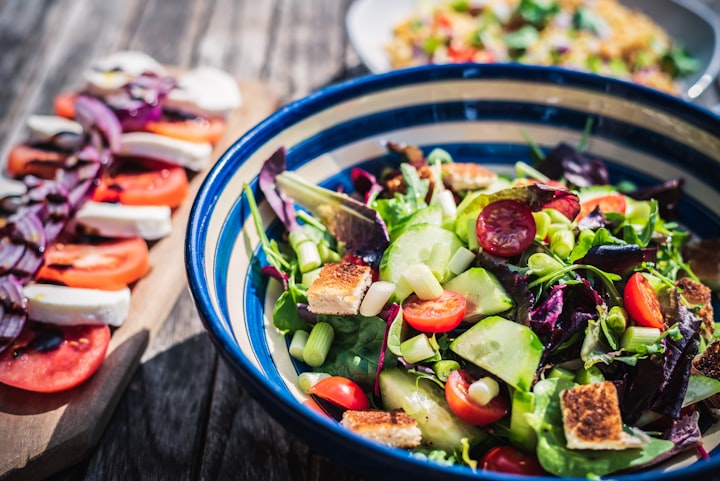How to boost your fat intake on a Keto Diet
Steps for boosting fat intake
The ketogenic or keto diet has gained popularity in recent years due to its ability to promote weight loss and improve overall health. This diet is high in fat, moderate in protein, and low in carbohydrates. While many people struggle with reducing their carbohydrate intake, some may find it challenging to increase their fat intake. In this article, we will discuss how to boost your fat intake on a keto diet.
Choose the right type of fat:
Not all fats are created equal. Some fats are heathier than others, and it’s essential to choose the right type of fat to achieve the best result. heavy fats included monounsaturated and polyunsaturated fats, which can be found in foods such as Avocados, nuts, seeds and fatty fish. Saturated fats, found in foods such as butter, coconut oil, and fatty meat, can also be part of a healthy keto diet, but should be consumed in moderation.
==> Click here for healthy diet plans <==
Cook with healthy fats:
One easy way to increase your fat intake by cooking your food with healthy foods. Use oils like Olive oil, Avocado oil, or Coconut oil to sauté vegetables or cook your protein source. You can also drizzle olive oil or avocado oil on your salad for added healthy fats.
Add healthy fats to your meals:
Another way to boost your fat intake is to add healthy fats to your meals. You can do this by adding avocado or nuts to your salad, or by cooking your eggs in butter or ghee. You can also add coconut cream to your coffee or smoothies for a creamy and delicious addition.
Eat fatty meats:
Fatty meats are an excellent source of healthy fats and protein, making them an ideal food for the keto diet. Opt for cuts of meat with a higher fat content, such as ribeye steak, bacon, or salmon. You can also add grass-fed butter or ghee to your meat for added healthy fats.
==> Click here for amazing meal plans <==
Use full-fat dairy products:
Full-fat dairy products such as cheese, heavy cream, and sour cream are great sources of healthy fats on a keto diet. Choose full-fat versions of your favorite dairy products to add healthy fats to your meals.
Increasing your fat intake on a keto diet is essential to achieve optimal results. Choose right type of fats, healthy healthy fat foods, cooking with healthy fat oils are all excellent ways to boost your fat intake.
How to monitor your Macros on a keto diet?
Macronutrients, or macros for short, refer to the three main nutrient groups our bodies need: fat, protein, and carbohydrates. Monitoring your macros on a keto diet is crucial to achieving and maintaining a state of ketosis, where your body burns fat for energy instead of carbohydrates. We will discuss how to monitor your macros on a keto diet.
Calculate your macros:
The first step in monitoring your macros on a keto diet is to calculate your daily macronutrient goals. You can use an online calculator to determine your specific goals based on your age, weight, height, and activity level. Generally, the keto diet recommends consuming around 75% of calories from fat, 20% from protein, and 5% from carbohydrates
Use a food tracker:
A food tracker is an essential tool for monitoring your macros on a keto diet. It allows you to input the foods you eat and track your macronutrient intake throughout the day. Some popular food trackers for keto dieters include MyFitnessPal, Chronometer, and Carb Manager.
==> Click for more amazing options <==
Read food labels:
When following a keto diet, it is crucial to read food labels carefully to determine the macronutrient content of the food. Look for foods that are high in healthy fats and low in carbohydrates. Be aware that some foods may contain hidden carbs or sugar, so it is essential to read labels carefully.
Plan your meals:
Planning your meals in advance can help you stay on track with your macro goals. When planning your meals, choose foods that are high in healthy fats, such as avocado, nuts, and fatty fish, and low in carbohydrates. Meal planning can also save you time and money by reducing food waste and allowing you to shop for ingredients in bulk.
==> Click here for healthy meal plans <==
Adjust your macros as needed:
As you progress on your keto journey, you may need to adjust your macros to suit your individual needs. Factors such as weight loss goals, exercise routine, and metabolism can affect your macronutrient requirements. If you find that you are not achieving your desired results, consider adjusting your macros to better meet your needs.
Monitoring your macros on a keto diet is essential for achieving and maintaining a state of ketosis. By following all these steps meals, you can stay on track with your keto diet and achieve your health goals. Remember, the keto diet is a lifestyle change, and it takes time and dedication to see results. Be patient, stay committed, and enjoy the benefits of a healthy, low-carbohydrate lifestyle.






Comments
There are no comments for this story
Be the first to respond and start the conversation.